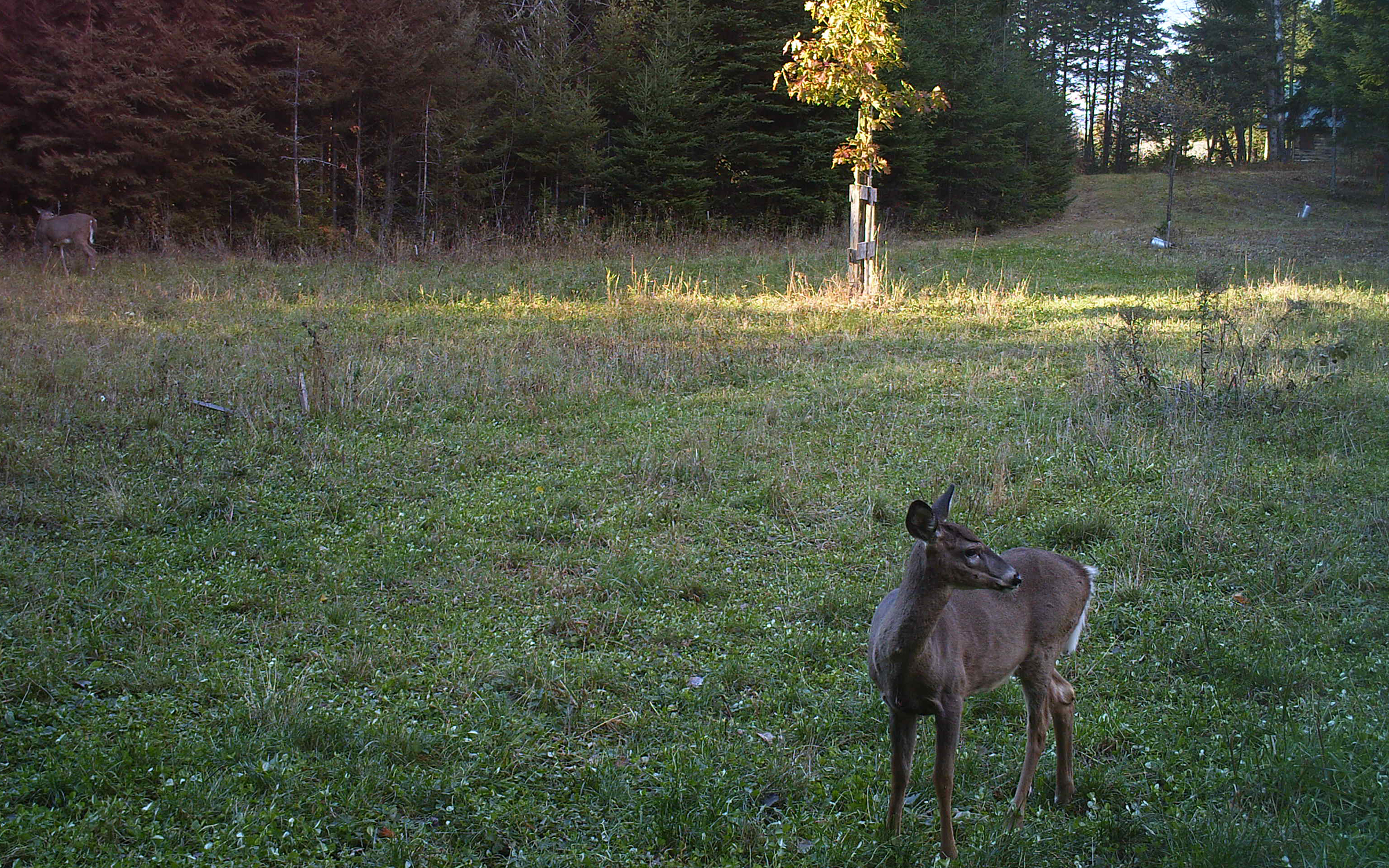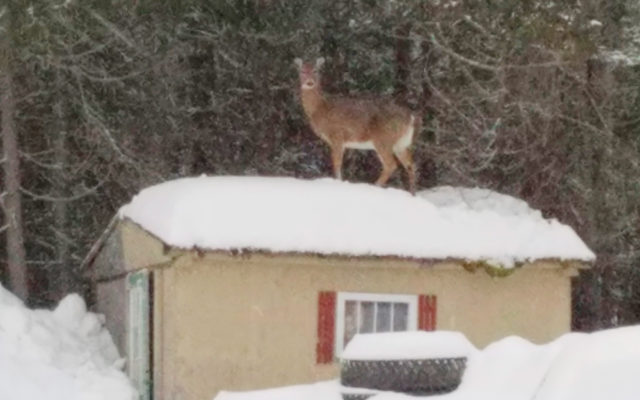
PRESQUE ISLE, Maine — The 2018-2019 winter was a tough one for northern Maine deer and one wildlife management area in Aroostook County is on track to see a decrease in hunting permits this year.
In the six wildlife management areas that make up most of Aroostook County, only three have had deer permit allocations in recent years. Under this year’s IF&W recommendations, which will be finalized this summer, district 3 comprising much of the St. John Valley, would see a reduction from 50 to 25. District 6 comprising central Aroostook County to Houlton would see its permit allocations stay the same at 100.
- Brian Kelly captured this image of a deer after it hopped onto a shed in Allagash to reach some tasty cedar boughs on Thursday, Feb. 1. (Courtesy of Brian Kelly)
This year, IF&W is recommending scaling back the total permits issued by about 19 percent, to 68,145. Most of the reductions are slated for northwestern Maine’s wildlife management districts.
In northern Maine, last winter was comparable to the winters of 2008 and 2009 in terms of its impact on the deer herd, said Nathan Bieber, biologist with the Maine Department of Inland Fisheries and Wildlife.
“On the whole, it was a very severe winter in northern Maine,” Bieber said.
DIF&W tracks winter temperatures and snow conditions at 26 stations across the state and also radio-collars deer to get a sense of the populations. In Allagash last winter, 40 percent of radio-collared deer died while 25 percent died in Ashland, Bieber said.
“There haven’t been any collared deer in our Allagash site during a more moderate or mild winter yet, so it will be interesting if we get an easier to winter to see what that looks like for our study deer,” Bieber said.
He said the Allagash site lost a similar number of a radio-collared deer during the 2017-2018 winter, while the sample size in Ashland during that winter was too small to measure significantly.
Most of Maine’s more than 200,000 deer reside in southern and central parts of the state, while some 18,000-22,000 are estimated in the six wildlife management areas that comprise most of Aroostook County, Bieber said.
“Common wisdom would be that after 2007, 2008 and 2009, the populations are down,” Bieber said of northern Maine’s deer. “We’re at around where we were in the late 1990s. It remains to be seen what these last two winters are going to do.”
Bieber said it is also remains to be seen in the long term how supplemental winter feeding efforts by Aroostook County landowners factor into the overall vitality of the region’s deer population.
Last year’s hunt saw the state’s largest deer harvest since 2002, with 32,451 deer taken, a 19 percent increase over 2017. In Aroostook County, towns with some of the most deer hunted include Ashland, Fort Fairfield and Monticello.
This time of year, deer are moving out of their wintering areas in search of prime foraging habitats of meadowlands and young woodlands.
Meanwhile, more hunters and landowners in northern Maine are showing interest in planting food plots for deer, Bieber said. The Aroostook County Conservation Association among other groups have been active in helping establish these plots that often include forage plants such as clover, alfalfa, radish and turnip.
“A lot of hunters are interested in doing anything they can to improve nutrition for their deer,” Bieber said.





